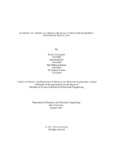| dc.contributor.advisor | Khan, Shahidul Islam | |
| dc.contributor.author | Aurangajeb, Raoha | |
| dc.contributor.author | Karmaker, Sajib | |
| dc.contributor.author | Kamal, Md. Ridhwan | |
| dc.contributor.author | Tasdid, M. Sadman | |
| dc.date.accessioned | 2022-04-25T05:15:32Z | |
| dc.date.available | 2022-04-25T05:15:32Z | |
| dc.date.copyright | 2021 | |
| dc.date.issued | 2021-10 | |
| dc.identifier.other | ID 15121003 | |
| dc.identifier.other | ID 16321089 | |
| dc.identifier.other | ID 16121010 | |
| dc.identifier.other | ID 17321010 | |
| dc.identifier.uri | http://hdl.handle.net/10361/16566 | |
| dc.description | This thesis is submitted in partial fulfillment of the requirements for the degree of Bachelor of Science in Electrical and Electronic Engineering, 2021. | en_US |
| dc.description | Cataloged from PDF version of thesis. | |
| dc.description | Includes bibliographical references (pages 75-79). | |
| dc.description.abstract | Air pollution is a burning question for the environment nowadays, requiring paramount interest. Air pollution can be controlled by monitoring the level of pollutant gases (NO2, SO2, CO2, CO, O2, PM 2.5, PM 10, etc.) in a periodic manner. Sensing air quality is a major concern for environmental monitoring. In this study, the air quality has been measured for 5 points of Dhaka city by using air quality sensors using IoT platform. The sensed data is then sent to the Thinkspeak cloud platform. The collected data is first processed and then analyzed for obtaining the value of the air quality index (AQI). The generated results are then visualized by the graphical representation. On the basis of this, an individual can take precautionary measures for a healthy life. Finally, the overall scenario for a monthly analysis has been depicted in a location-based mapping. The studied areas are Mirpur 6, Uttara Sector 6, Mohakhali Wireless, Nikunjo 2, and Uttara 12. All the setups are located in the residential areas. The result shows that the Mohakhali has the highest AQI value which is unhealthy for the inhabitants according to the standard index. The real-time data can be observed remotely by using the IoT platform. The output of the study can be further utilized for public health monitoring purposes. | en_US |
| dc.description.statementofresponsibility | Raoha Aurangajeb | |
| dc.description.statementofresponsibility | Sajib Karmaker | |
| dc.description.statementofresponsibility | Md. Ridhwan Kamal | |
| dc.description.statementofresponsibility | M. Sadman Tasdid | |
| dc.format.extent | 84 pages | |
| dc.language.iso | en | en_US |
| dc.publisher | Brac University | en_US |
| dc.rights | Brac University theses are protected by copyright. They may be viewed from this source for any purpose, but reproduction or distribution in any format is prohibited without written permission. | |
| dc.subject | IoT | en_US |
| dc.subject | Air quality | en_US |
| dc.subject | Environment | en_US |
| dc.subject | ThingSpeak | en_US |
| dc.subject | Data | en_US |
| dc.subject | Health Issue | en_US |
| dc.subject.lcsh | Internet of things | |
| dc.subject.lcsh | Air quality indexes | |
| dc.title | Internet of Things (IoT) based air quality index measurement system for Dhaka city | en_US |
| dc.type | Thesis | en_US |
| dc.contributor.department | Department of Electrical and Electronic Engineering, Brac University | |
| dc.description.degree | B. Electrical and Electronic Engineering | |

